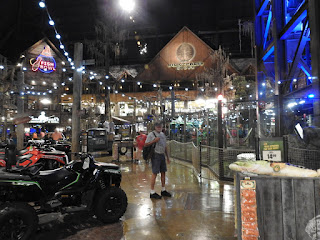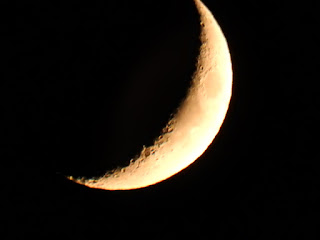Our boat didn’t sail right by Cape Girardeau but it
seemed like it. In fact, the ACL’s Queen
of the Mississippi moored up right next to us on the river side so American
Queen had to back out to get under weigh.
 |
| Blocked in by the enemy! |
The river is wide and smooth and pretty, bordered sometimes by thick
foliage, sandy beaches or rocky ledges. Our
luck holds steady for now, the sky has been clear and the sun shines
warmly. Of course there has been a bit
of humidity but it has not been oppressive.
 |
Mark Twain Library
(this is where I write the blogs) |
Nevertheless, our trusty skeeter repellant stands at the ready. On another administrative note, the food and
wine provided by our hosts in the lovely dining room has been delicious and
generous. Last evening, our treats
included crawfish bisque, alligator in red sauce and black forest cake.
 |
| Dining room |
 |
| Staircase and chandelier |
About midday, the Captain announced that in awhile, the
boat would hang a sharp left and head up the Ohio River and sail toward
Paducah, as planned. He also learned
that there is pier construction happening in Dover so the boat cannot park
there so our original route has been modified a little and we’ll get a generous
long day in Paducah instead. In case you
wonder, a “ship” has been in salt water, therefore, we are a “boat.” Our sister boat, the American Duchess traveled
with us down the Ohio, today. When we
arrived at the Mississippi, she turned north and we said, “good bye” and headed
south.
 |
| Our sister ship, American Duchess |
There was a community of settlers in the Paducah area
living peacefully alongside the friendly Indian tribe. In 1827, however, things changed. Gen. William Clark bought 37,000 acres of
Kentucky land including that upon which Paducah is located for $5 (total
cost). From whom he bought it is not
clear to me since the Indians were here first.
He presented the Indians with the deed and ordered them to move so they
did. He named the town Paducah to honor
the Indians’ chief, Paduke. Small
comfort, I guess, as Chief Paduke and his folk were evicted.
Because of its geography, where the Ohio and Tennessee
Rivers converge, this area has been a strategic port city since long before the
Revolutionary War. It was always easiest
to move things along the water rather than over the rugged land. In wartime, the rivers became major arteries
for gunboats, troops and supplies and later, the area became an important
railway hub as well.
In 1937, the Ohio River overflowed its banks and flooded
the area for weeks. The flood waters
reached 61 feet and 27,000 people evacuated.
Afterward, a floodwall was constructed and colorful murals were painted
over many blocks by artist Robert Dafford depicting historic local events.
 |
| Painted flood wall |
 |
| Check out the thickness of the flood wall! |
The town is now a home for many fine arts
including drama, photography, distilleries (moonshine) and quilting! The National Quilt Museum holds a competition
here each year. Libby Lehman’s artistic
award-winning quilts are on display as are the quilts of many other fine
artists. I am amazed by the incredible
detailing in the quilts that adorn the walls here. I supposed it would take me the rest of my
life to create just one of these pieces of art.
There is one display that left me in disbelief, though. It is a wooden quilt. Yes, wood.
I suppose Mr. Quilt said to Mrs. Quilt, “If you can make a quilt, so can
I.” It is so realistic the fact that it
is not actually cloth is spell-binding.
One must touch it. “DO NOT
TOUCH!” it says. Too late. Lindy can testify that this quilt is made of
wood. Not a “fine” art but an art form
nevertheless, is gunsmithing. Ferd
Hummel had a shop in this town and did gun repairs for Federal troops during
the Civil War. He was awarded a patent
in 1881 for his breech-loading firearm.
 |
| Wooden quilt! |
 |
| Lindy schmoozing with Captain Bobby |
Captain Bobby Duncan can drive a boat and also play a
guitar. He invited guests to join him
for a jam session with the Steamboat Syncopators last night in the Engine Room
Bar! We had acquired a small bottle of
chocolate moonshine in town and took a small glass with us to the bar to hear
the captain rock out! He and the band
were amazing. Behind the band there are
large round windows and beyond them, the big red paddlewheel splashes and
churns round and round, keeping time to the music.
 |
| Captain Bobby (on the right) rockin' out! |
It looks as if you are staring into the
window of a massive front-loading washing machine! We danced, sang, sipped and laughed with the
captain until, at last, we were hit over the head with the Sleep Fairy’s
wand. What an end to our wonderful day!
 |
| Fritz and Pal on their veranda |
 |
| Osprey eating MY walleye! |




















































